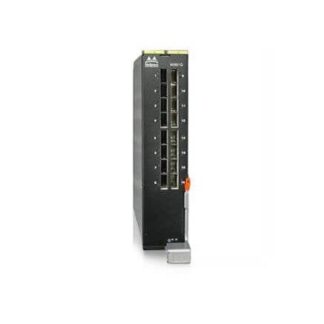Description
Software-Defined Networking Solutions
Software-Defined Networking (SDN) is a network architecture approach that separates the control plane (decision-making and management) from the data plane (forwarding and processing of data). This separation enables greater programmability and flexibility in the network, allowing administrators to manage and configure the network through software rather than manual configuration of individual network devices.
SDN solutions provide several key benefits, including:
- Centralized Control: With SDN, network administrators have centralized control over the entire network, making it easier to manage, monitor, and configure the network.
- Improved Network Agility: SDN enables organizations to quickly and easily respond to changing network requirements, allowing them to adapt to new business needs or technology changes.
- Better Network Visibility: SDN provides greater visibility into network performance, allowing administrators to quickly identify and resolve network issues.
- Improved Network Security: SDN solutions can provide enhanced security features, such as micro-segmentation, which improves network security by segmenting the network into smaller, isolated segments.
- Enhanced Network Automation: SDN enables organizations to automate many routine network management tasks, such as provisioning new devices or configuring network policies, reducing the time and effort required to manage the network.
- Cost Savings: SDN can help organizations reduce their overall network costs by enabling more efficient use of network resources and reducing the need for manual network configuration and maintenance.
Management and Deployment
The HPE JG726A Management and Deployment refer to the process of configuring, maintaining, and operating a network switch in a data center environment. In the context of the HPE FlexFabric 5930-32QSFP Switch, some of the key aspects of management and deployment include:
- Configuration: The switch can be configured through a web-based interface, CLI (Command Line Interface), or through APIs, allowing organizations to easily manage and configure the switch to meet their specific network requirements.
- Monitoring and Management: The switch provides real-time monitoring and management features that allow administrators to monitor the switch’s performance, view log files, and manage the switch’s configurations remotely.
- Firmware Updates: The switch provides an easy-to-use firmware update process that allows organizations to keep the switch’s software up-to-date, ensuring that they are always running the latest version of the firmware.
- Network Automation: The switch supports network automation through APIs, allowing organizations to automate tasks such as switch configuration and management, reducing the time and effort required to manage the switch.
- Security: The switch provides a range of security features, including Access Control Lists (ACLs) and Network Access Control (NAC), to help secure the network and prevent unauthorized access.
- Deployment: The switch provides a straightforward deployment process, with simple installation and activation procedures, allowing organizations to quickly and easily add the switch to their network.
Cost-Effective Solution
A cost-effective solution refers to a solution that provides a high level of value at a relatively low cost. In the context of networking, a cost-effective solution might refer to a switch, router, or other network device that provides advanced features and capabilities while still being affordable.
Some of the key benefits of a cost-effective solution include:
- Lower Costs: A cost-effective solution helps organizations to reduce the overall cost of their network infrastructure, enabling them to allocate more resources to other areas of the business.
- Increased Value: A cost-effective solution provides organizations with advanced features and capabilities at a relatively low cost, improving overall network performance and value.
- Reduced Capital Expenditures: A cost-effective solution can help organizations to reduce their capital expenditures, as they are able to purchase more network devices for their budget.
- Improved Return on Investment (ROI): A cost-effective solution can help organizations to improve their ROI, as they are able to purchase more network devices or resources for their budget, improving network performance and capabilities.
- Increased Flexibility: A cost-effective solution often provides organizations with increased flexibility, enabling them to adapt to changing business needs or requirements without incurring significant additional costs.
A cost-effective solution is an important consideration for organizations when selecting a network device or solution. By providing advanced features and capabilities at a relatively low cost, a cost-effective solution can help organizations to improve their network performance, reduce costs, and maximize their return on investment.
Main Information about the HPE JG726A
- Manufacturer: HPE
- Part Number or SKU# JG726A
- Product Type: Managed Switch
- Total Number of Ports: 32 Ports
Technical Information
- Device Type : Switch – 32 Ports – L3 – Managed
- Enclosure Type : Rack-Mountable – 1u
- Ports : 32 X 40 Gigabit Qsfp+
- Performance : Throughput : 1905 Mpps, Routing/Switching Capacity : 2560 Gbps
- Capacity : Ipv4 Routing Table Entries : 16000, Ipv6 Routing Table Entries : 8000
- Mac Address Table Size : 288k Entries
- Jumbo Frame Support : Yes
- Routing Protocol : Ospf, Bgp-4, Is-Is, Rip-1, Rip-2, Igmp, Vrrp, Ospfv2, Ospfv3, Static Ipv6 Routing, Ripng, Is-Isv6, Bgp-4+, Mpls, Bidirectional Forwarding Detection (Bfd)
- Remote Management Protocol : Snmp 1, Telnet, Snmp 3, Snmp 2c, Tftp, Cli
- Authentication Method : Secure Shell (Ssh), Radius, Tacacs+, Secure Shell V.2 (Ssh2)
- Features : Flow Control, Dhcp Support, Bootp Support, Arp Support, Vlan Support, Ipv6 Support, Sntp Support, Weighted Fair Queuing (Wfq), Weighted Random Early Detection (Wred), Sflow, Spanning Tree Protocol (Stp) Support, Virtual Route Redundancy Protocol (Vrrp) Support, Multiple Spanning Tree Protocol (Mstp) Support, Tunneling, Access Control List (Acl) Support, Quality Of Service (Qos), Device Link Detection Protocol (Dldp) Support, Equal-Cost Multipath (Ecmp), Bidirectional Forwarding Detection
- Ram : 4 Gb – Sdram
- Flash Memory : 512 MB
Expansions and Connectivity
- Interfaces : 32 X 40gbit Lan – Qsfp+ 1 X Serial (Console) – Rj-45 1 X Management (Lan) – Rj-45 1 X Usb 2.0
Power
- Power Device : Internal Power Supply
- Installed Qty : 0 (Installed) / 2 (Max)
- Power Redundancy : Optional
- Power Redundancy Scheme : 1+1 (With Optional Power Supply)
- Power Consumption Operational : 409 Watt










